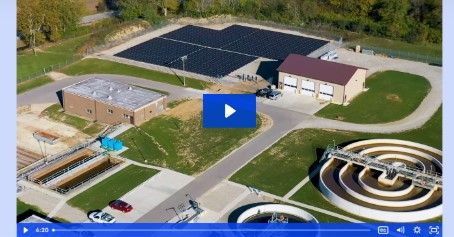This article originally appeared in the July/August 2020 issue of FMJ
Workplace leaders are rethinking what offices look like when it is safe to reopen their spaces following the coronavirus pandemic. Rather than a flood of employees rushing back to the office in full force, returning to the workplace is occurring in shifts and waves.
In the United States, officials introduced a three-phase plan1 allowing governors to reopen certain businesses after a period of sustained decline of virus cases in their state. The first two phases recommend employers continue to enforce physical distancing, including limiting office space density and closing common areas. The European Union shared similar plans2 on how it would roll back some of its lockdown restrictions.
As FMs prepare for a return to the workplace, protecting the workforce will require careful planning and, in many cases, reconfiguring office space. Here are six critical elements a return-to-work plan should address.
1. Reconfigure space for physical distancing while enabling collaboration
The World Health Organization (WHO) uses the term “physical distancing,” rather than “social distancing” in reference to its guidelines to maintain personal space of six feet or more to prevent the spread of the virus.
WHO infectious disease epidemiologist Maria Van Kerkhove explains that “It’s important to remain physically separate but socially connected.”3 This terminology has been supported in the FM community by proponents such as workplace thought leader and author Rex Miller.4
As business leaders everywhere imagine what a return to work will look like once it is safe to reopen their offices, they face the daunting challenge of implementing physical distancing without losing the connected experiences that define their workplace.5
With Gallup research6 showing 41 percent of employees will continue to work remotely at least part of the time following the coronavirus pandemic, it has become clear that “work” is no longer defined within the confines of four walls and a traditional nine-to-five day. While this has been a trend for some time, current economic and societal pressures have created a tipping point for companies to recognize that “workplace” is more than simply a physical location — it is an ecosystem of employees connecting and collaborating through purpose-built technology.
It has also become clear that when employees do come into the office, they expect more than a mediocre desk that is not nearly as comfortable as their home office. They want to have spontaneous interactions and collaborate with their colleagues in an environment that protects their most basic need to feel safe. It should be just as easy for employees to do that in person as it is to collaborate online.
FMs and workplace leaders have the power to create an environment that cultivates those connections, allowing employees to thrive in this new world.
Prior to reopening the workplace, it is important to reevaluate existing floor plans. In many office environments, desks are spaced just a few feet apart or employees sit less than an arm’s length away from each other. Meeting physical distancing guidelines may require doubling the distance between desks or asking employees to occupy every other workstation.
As space planners rethink workplace design, they must also consider conference rooms. Seating in large conference rooms should be spread out to allow for physical distancing. They will also need to limit the number of employees who can gather in each space and can do so by updating room scheduling displays to indicate new capacity maximums. Additionally, they may find they need to recategorize small-capacity conference rooms as single-person workspaces.
FMs should also consider closing common areas, such as employee cafeterias, to limit the number of people who congregate there.
2. Plan for returning to work in phases
Global enterprises that have brought back critical on-premise workers are largely doing so in stages. Many are designating groups of employees by job function and team dependencies to bring them back in waves using alternating shifts. For example, they are planning for one group to work in the office on Mondays and Wednesdays, and another on Tuesdays and Thursdays.
As FMs plan scenarios for returning employees to work in phases, they may want to categorize employees by department, by status (full-time versus part-time) or by office location. Those who have a space and move management software in place could also select employees and assign them to several different groups.
In developing a plan for returning to work in phases, consider employees who have obligations that may require them to continue working at home for a period of time. For instance, if the workplace is reopening but schools or daycares remain closed, employees may need to continue working remotely. They may also need to take paid leave, which is allowed for in the U.S. under the new Families First Coronavirus Response Act.7
If the organization has been considering moving to a four-day workweek or designating one day per week as a remote workday, this could be a good time to implement this change.
3. Plan for communicating with employees
Any return-to-work plan must include a plan for communicating with the workforce. Understanding this is only the first step, putting it into practice involves cultural and behavioral change. Successful agile work strategies are fundamentally about good change management and building a foundation of trust. They also require several key elements, including an activity-based workplace design that allows employees to work where they work best, coupled with policies that provide guidance for where, when and how that work happens.
First, employees will need to know when they are being asked to return to the office. Companies with multiple office locations may not be ready to reopen at the same time.
Depending on the changes the FM team implements, employees may also need assistance in learning how to navigate their new workplace to maintain physical distancing. Employee experience solutions, such as mobile apps and wayfinding displays, can help manage these critical communications.
For instance, FMs can use mobile apps to announce the re-opening of various office locations and the schedule for those offices. Wayfinding displays in the lobby that show floor plans can note the recommended route to manage the flow of traffic. This can include directional markers that indicate which way employees should walk through high-traffic areas, such as hallways and stairwells, and where they can find restrooms and sanitizing stations. Additionally, employees can submit service requests when paper towels or other supplies are running low.
A strong internal communications plan involves both employers and employees. With an employee experience app, businesses can survey employees about how they are feeling at work and what additional support they may need.
Fundamentally, this means empowering employees by giving them access to the spaces, policies and technologies they need to collaborate with their colleagues, no matter where work is happening. And, as for any desired behavior to succeed, it must be easy for employees to adopt.
4. Plan for managing visitors
As offices re-open, FMs must also consider how to stay within recommended occupancy for each space. In many cases, that means only allowing half as many people as before — at least at first — while accounting for visitors.
Visitor management systems can help maintain a digital record of every client, vendor and guest. Pre-registering planned visitors allows the FM team to keep tabs on how many additional people will be in the workplace. If monitoring employee and visitor temperatures is part of the return-to-work plan, visitor management software can maintain a record of this data.
5. Plan for keeping the workplace clean
The coronavirus pandemic demands new standards for workplace cleanliness. For FMs, this means working closely with janitorial teams to develop a plan that will ensure all surface areas are cleaned and sanitized after each use.
With space management software, FMs can use seating assignments and occupancy data to create a demand-based cleaning schedule. With a more flexible, activity-based working environment that allows employees to choose different spaces throughout the day, consider adding occupancy sensors to see which spaces have been used and prioritize cleaning accordingly.
Encourage employees to take an active role in keeping the workplace safe by reminding them to wipe down conference room tables, shared workstations and other common surfaces after each use.
Building airflow has played a massive contributing factor in the spread of COVID-19. Immunologist and biology researcher and University of Massachusetts Dartmouth professor Erin Bromage shared a formula to aid in understanding virus circulation and the related risks: successful infection = exposure to virus x time.8 Bromage highlights a spreading event that occurred in a restaurant in which several patrons in the path of the air conditioning were infected by a single carrier, while those at tables out of the main airflow were not. Of workplaces, she says “being in an enclosed space, sharing the same air for a prolonged period increases your chances of exposure and infection.”
As FM teams re-assign workspaces and change traffic patterns to accommodate physical distancing, it is important to account for air circulation.
6. Update workplace policies to protect employee health
Having clear, up-to-date workplace policies will reassure employees and empower them to protect themselves during an uncertain time.
Now is the time to consider updating policies related to remote work, sick leave and visitors, as well as any other policies that may have changed.
If the company plans to continue encouraging remote work, make it clear under what circumstances remote work is appropriate and when employees are expected to come into the office. Employees who feel sick but well enough to work should be permitted to work remotely if possible; however, it may be unclear if they need to notify their supervisor. Employees also need to know how to maintain information security when working from home on personal devices.
With remote working, businesses may want to re-evaluate how they measure employees. Simply monitoring activity levels and outputs is no longer enough. To truly gauge remote workforce productivity, companies should instead shift to measuring outcomes.
Returning to work: A defining moment
When the world returns to the workplace, it will be a defining moment. FMs and other workplace leaders should be thinking about how to adapt office environments to support necessary physical distancing without the unintended consequence of social distancing. That includes returning employees to work in phases and reconfiguring seating arrangements to reduce office density.
FMS must also have the flexibility to ease spatial distancing in the workplace when it is appropriate and immediately re-enact these protocols as necessary. Just as businesses have plans for natural disasters and emergency evacuations, those overseeing building operations should have plans in place to keep employees safe during a pandemic.
Companies that establish and socialize the chain of command and emergency communication channels, know when and how to equip home workers, and can implement a safe return to site will be in a better position to mitigate loss and speed recovery.





